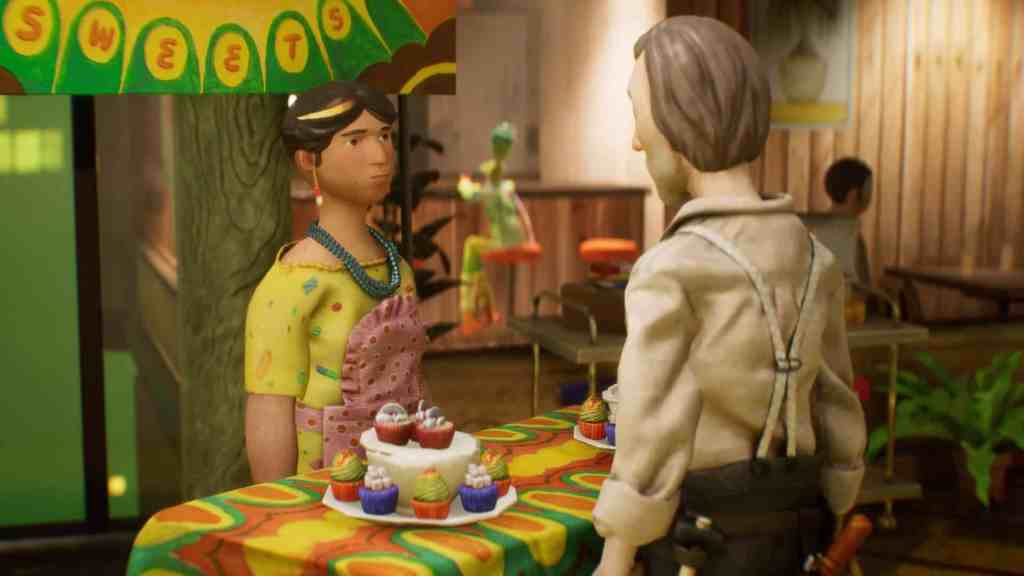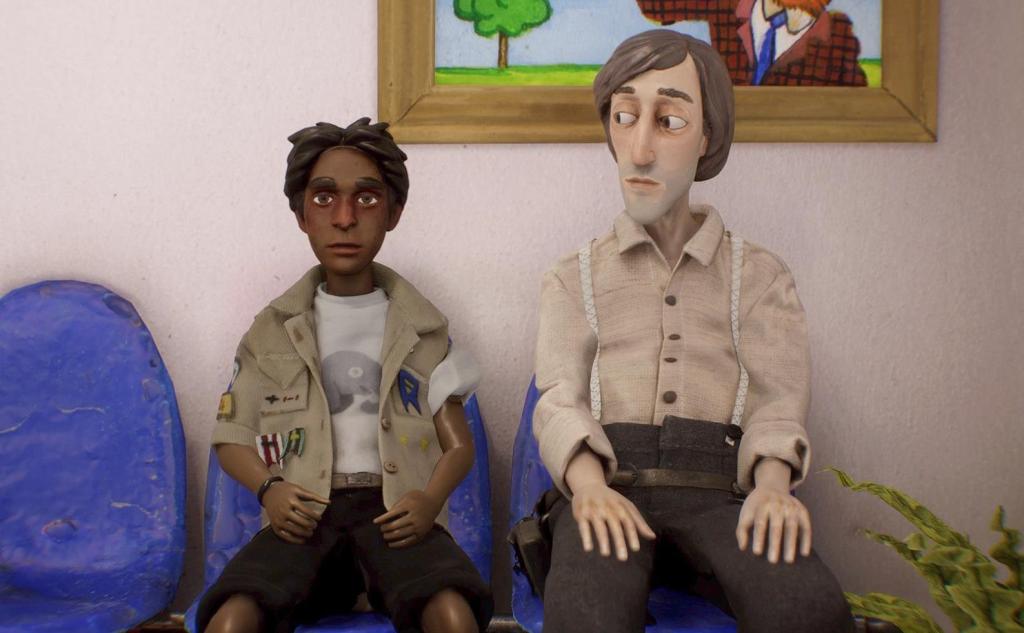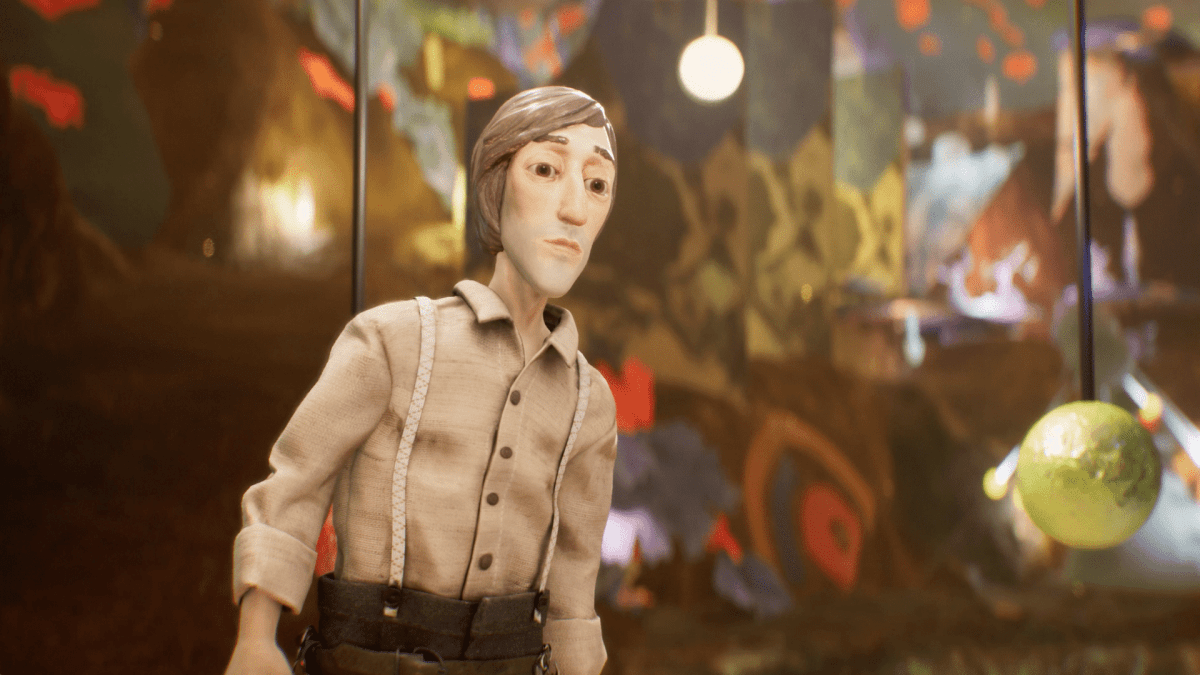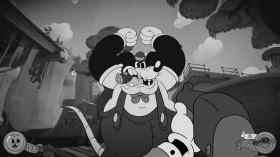In 2012, Wes Anderson told Slate, “I always liked stop-motion that has a lot of texture in it. When it’s texture, you sense that you’re looking at miniatures. And there’s something sort of magical about that to me.” While the German indie studio Slow Bros. finds it “a little strange” that their debut game, Harold Halibut, often gets compared to the animated works of this cinematic auteur – it can’t be helped.
Not because it features the stop-motion visual style that audiences all grew to like (and even love) thanks to Wallace and Gromit, or Anderson’s The Fantastic Mr. Fox; it‘s because within each and every bit of the game you can feel the human touch that brought it to life.
In this “narrative game about friendship and life on a city-sized spaceship submerged in an alien ocean,” you are placed in the shoes of Harold, a good-hearted yet meek lab assistant-cum-janitor, who’s simply going about his day interacting with various members of the city and completing tasks.
During its Steam Next Fest’s demo, I helped to save a marriage from a big misunderstanding, fixed some malfunctioning tech, fed fishes, and enjoyed riding a gooey, Futurama-like tube system.
Though that may sound like a busman’s holiday on paper, mixed with some Charlie Kaufman-esque weirdness seeping through the cracks, the pacing of Harold Halibut actually lets players soak in the handiwork that adorns every single detail of this strangely beautiful world.
Read: Steam Next Fest 2024: 10 game demos to check out ASAP
But before I go on showering Harold Halibut‘s stop-motion universe with compliments, let’s set something straight: this is not a stop-motion game. At least, technically speaking.
“We have built everything that can be seen in the game. But instead of animating [everything] picture-by-picture by moving the characters along, we 3D scan them and then animate everything digitally,” Ole Tillmann, the art director and Slow Bros. co-founder, explained over Zoom. Considering that Harold Halibut is already a whopping 11 years in the making, that sounds only reasonable if it ever wants to see the light of day.
If you’re wondering who in their right mind would set forth with a project of such monumental scope, in such a rapidly advancing industry, Tillmann has an explanation. “The first three people that founded the company just didn’t really know any other way of doing it. The biggest storytelling device was building stuff,” he said.
While everyone in the team shared some filmmaking and carpentry background – not to mention a fondness for Eastern European animation classics – it wasn’t until Tillmann came aboard that the team landed on stop-motion.
“I was doing illustration and I really connected that initial idea of building the game in clay,” said Tillmann. “Even in that initial phase, we realised that it’s a big difference to have all the objects in front of you rather than in a virtual environment. Just having the puppet between us, while [we were] fantasising about the story, retrospectively feels like a benefit of some sort.”

Surprisingly, up until the point where computational magic (including mo-cap tech) gets involved, the process of creating Harold Halibut all sounds very much like your classic stop-motion production.
“It starts traditionally, in the drawing phase,” Tillmann explained. “I think drawings are the base layer for everything. From there it remains traditional until we build sets, from all kinds of materials – metal, wood and plaster – and paint them, giving them an ageing dirt layer, and the puppets with clothes from textiles.”
Those tiny costumes on the inhabitants of the ship FEDORA, not to mention a few particularly colourful extraterrestrial outsiders, are in fact crafted by Tillmann’s partner, Holle Schlickmann. As a costume maker for regular-sized TV characters, she handled the design, cutting, and sewing of each and every costume we see on-screen.
Once completed, they are carefully placed onto the puppets, before getting scanned and uploaded into Unity, where, with a little help from animators and mo-cap wizardry, dolls spring to life like Carlo Collodi’s Pinocchio.

After spending the better part of the demo wandering around Harold Halibut‘s diorama-like scenes, teeming with life and chance encounters around every corner, you start to understand why Slow Bros. have taken their time.
Each scene, no matter how big or small, is fully fleshed out and filled with props that – just like millennium-old sculptures and art pieces in museums – beg to be touched or interacted with. And while most of the things you see in the game are indeed interactive, a feat already impressive by all measures, some things aren’t due to the cost of manpower and time it takes to bring things to life in a stop-motion game.
Tillmann illustrated this with an example: “There’s a coffee machine in the background somewhere and it would fit with the humour and the story overall for you to be able to wander over there, push the little coffee button and for it to make some kind of steamy noise. You’d burn your fingers and hear ‘Ouch!’ [from Harold]” he says.
“Retrospectively, that’s one of the biggest things I wish we could have incorporated somehow. But as you’ll eventually see in the game, it’s already so expansive – we had to stop somewhere.”

With the advancements of AI looming over the video game industry like a dark cloud, despite hopeful resistance from gaming communities (and with games like Justin Roiland’s High on Life sparking an outcry for AI-generated in-game poster art), I was curious to seek the Slow Bros. team’s opinion on hand-made games in an AI-driven landscape. Are unconventional, time-consuming projects like Harold Halibut a dying breed?
Tillmann doesn’t think so. “In the beginning, we had some trouble because we published our first bigger video of Harold Halibut around 2016 or 2017. We had a few articles published about that,” he said.
“Then somebody claimed it was ‘the first handmade game’ – the comment section was suddenly full of people saying things like ‘we had all kinds of people making games like this in the past’ or ‘there’s at least five bigger titles that were made from clay or paper!’,” said Tillmann. “Now, in the past three or four years, it feels like there are more and more handmade games that keep popping up.”
Audiences have already seen an emergence of meticulously crafted, handmade video games – everything from interactive vintage cartoons (Cuphead) to watercolour paintings (Dordogne), but more recently this includes games like Vokabulantis, Follow the Meaning, and 2021’s Mundaun, with its hand-penciled graphics.
Tillmann thinks the growing interest in handmade games runs parallel to the current trends in the film industry. “People keep going back to animatronics or physical in-camera effects versus green screen,” he said. “It’s hard to point out why, but there’s definitely something there that people connect to. It’s not entirely 3D CGI, but it has some kind of basis that connects to the reality around us that we know.”
Would Slow Bros. still go through the project knowing the lengths they will have to go through to see the finish line, then? “I really don’t think so,” Tillmann said, chuckling. “There’s some amazing naïveté in the beginning that lets you start. Then you stick to it over time and kind of grind through it.”
I’m glad, then, that Slow Bros. decided to stick with it in the end. Start freeing up space on your SSDs because Harold Halibut is finally coming out… “within the next couple of months“.





